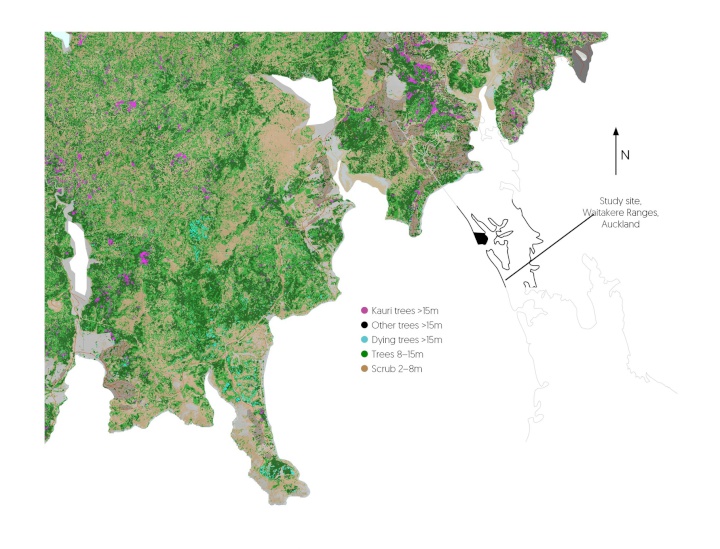First Map Of Individual Kauri Trees In Waitakere Ranges Released To Help Understand The Spread Of Kauri Dieback
Researchers at Manaaki Whenua – Landcare Research, New Zealand’s Crown Research Institute for our land and environment, have produced the first map of individual kauri trees in New Zealand, focusing initially on the 27,000-hectare Waitakere Ranges Regional Park near Auckland, in the hope of helping to identify where kauri trees are and better understand the spread of kauri dieback.

Manaaki Whenua’s Advanced Remote Sensing of Aotearoa programme, in collaboration with the Auckland Regional Council, has identified 28,424 individual kauri trees over 15 metres tall in the park and a further 5,708 giant trees that are upwards of 30 metres tall.
They found 1,173 trees over 15 metres have died or are currently dying, a higher number than the team expected to find.
“The map showed that this is a complex forest,” says Manaaki Whenua lead researcher Dr John Dymond.
“It seems as though there are many dead and dying trees around the periphery of the park where there are access roads and paths. If the affected trees are close to live kauri trees, then we can compare them and work out which are dying.”
Researchers used remote sensing method to combine data from LiDAR (a laser-based surveying technique), aerial base multispectral imagery, and ground data to construct the map.
“We analysed and combined these data to get the results and information around the height, geometrical structure, branches and colour of the trees and leaves,” explains Dymond.


 Gordon Campbell: Papal Picks, And India As A Defence Ally
Gordon Campbell: Papal Picks, And India As A Defence Ally PSA: PSA Forces Changes To Restructure Of Data & Digital And Pacific Health
PSA: PSA Forces Changes To Restructure Of Data & Digital And Pacific Health Waitangi Treaty Grounds: Anzac Day Commemorative Evening Service At The Waitangi Treaty Grounds
Waitangi Treaty Grounds: Anzac Day Commemorative Evening Service At The Waitangi Treaty Grounds Ministry For Culture And Heritage: New Zealand Flag Half-Masting To Mark The Passing And Funeral Of His Holiness Pope Francis
Ministry For Culture And Heritage: New Zealand Flag Half-Masting To Mark The Passing And Funeral Of His Holiness Pope Francis NZ Government: PM Sends Condolences On Passing Of Pope Francis
NZ Government: PM Sends Condolences On Passing Of Pope Francis NZDF: Battlefield Remains Unearthed By Wildfires In Gallipoli Covered Over By Kiwi Team
NZDF: Battlefield Remains Unearthed By Wildfires In Gallipoli Covered Over By Kiwi Team NZ Police: New Zealand Police team up with Z Energy, NZTA and ACC to remind Kiwis to drive safe this Easter
NZ Police: New Zealand Police team up with Z Energy, NZTA and ACC to remind Kiwis to drive safe this Easter


